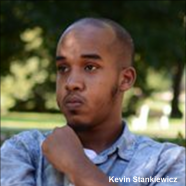Overview
Abdul Razak Ali Artan was an 18-year-old Somali refugee, suspected domestic terrorist, and alleged ISIS sympathizer. On the morning of November 28, 2016, Artan drove his car into a crowd of people on a sidewalk at the Ohio State University (OSU)—where he was a student—and then proceeded to stab and slash victims with a butcher knife. He wounded 11 people—hitting six with his car and stabbing five others—before he was shot and killed by a campus police officer within one minute of beginning his assault.Brian Ross, Mike Levine, Josh Margolin, and Aaron Katersky, “Officials Investigating Anti-US Facebook Rant Believed Linked to OSU Attacker,” ABC News, November 28, 2016, http://abcnews.go.com/US/osu-attack-suspect-identified-abdul-razak-ali-artan/story?id=43827435;
Mitch Smith, Richard Perez-Pena, and Adam Goldman, “Suspect Is Killed in Attack at Ohio State University That Injured 11,” New York Times, November 28, 2016, http://www.nytimes.com/2016/11/28/us/active-shooter-ohio-state-university.html. Artan is believed to have been inspired in part by the ideology of late al-Qaeda cleric Anwar al-Awlaki. Just before the attack, Artan referred to Awlaki as “our hero” in a post on Facebook.Brian Ross, Mike Levine, Josh Margolin, and Aaron Katersky, “Officials Investigating Anti-US Facebook Rant Believed Linked to OSU Attacker,” ABC News, November 28, 2016, http://abcnews.go.com/US/osu-attack-suspect-identified-abdul-razak-ali-artan/story?id=43827435;
Jonathan Dienst, “18-Year-Old Somali Identified As Ohio State Attack Suspect,” NBC New York, November 28, 2016, http://www.nbcnewyork.com/investigations/18-Year-Old-Somali-Identified-As-Ohio-State-Attack-Suspect-403425576.html;
Jake Trapper, Twitter post, November 28, 2016, 5:56 p.m., https://twitter.com/jaketapper/status/803417243547799552. ISIS claimed responsibility for the attack the following day via the encrypted messaging app Telegram, referring to Artan as the group’s “soldier.”Mitch Smith, Rukmini Callimachi, and Richard Perez-Pena, “ISIS Calls Ohio State University Attacker a ‘Soldier,’” New York Times, November 29, 2016, http://www.nytimes.com/2016/11/29/us/ohio-state-university-abdul-artan-islamic-state.html.
Artan was born in Somalia in 1998 and in 2007, his family fled to Pakistan, where he lived for seven years in a refugee camp. He reportedly came to the United States as a legal permanent resident in 2014 with six family members. Artan studied at a community college in Columbus, Ohio, before transferring to OSU in 2016, were he studied logistics management at the business school.Jonathan Dienst, “18-Year-Old Somali Identified As Ohio State Attack Suspect,” NBC New York, November 28, 2016, http://www.nbcnewyork.com/investigations/18-Year-Old-Somali-Identified-As-Ohio-State-Attack-Suspect-403425576.html;
“What's known about the OSU attack suspect Abdul Razak Ali Artan,” CBS News, November 28, 2016, http://www.cbsnews.com/news/ohio-state-university-attack-whats-known-about-suspect-abdul-razak-ali-artan/; Melissa Korn, Kris Maher, and Pervais Shallwani, “Ohio State University Says Student Carried Out Attack,” Wall Street Journal, November 28, 2016, http://www.wsj.com/articles/ohio-state-university-reports-active-shooter-on-campus-1480347704. In August 2016, he was interviewed by OSU’s school newspaper, The Lantern. Artan spoke to the reporter about what he perceived to be the media’s inaccurate portrayal of Muslims: “I’m a Muslim, it’s not what the media portrays me to be. If people look at me, a Muslim praying, I don’t know what they’re going to think, what’s going to happen.”Kevin Stankiewicz and Jay Panandiker, “From the archives: Ohio State attacker featured in ‘Humans of Ohio State,’” The Lantern, November 28, 2016, http://thelantern.com/2016/11/from-the-archives-ohio-state-attacker-featured-in-humans-of-ohio-state/.
Minutes before carrying out the attack on November 28, Artan reportedly warned in a post on Facebook that Muslims would not cease conducting “lone wolf attacks” until America gave “peace to the Muslims.” In addition to referring to Anwar al-Awlaki as “hero,” Artan expressed his desire to “use a billion infidels in retribution…” and warned that he had reached a “boiling point.”Jake Trapper, Twitter post, November 28, 2016, 5:56 p.m., https://twitter.com/jaketapper/status/803417243547799552;
Brian Ross, Mike Levine, Josh Margolin, and Aaron Katersky, “Officials Investigating Anti-US Facebook Rant Believed Linked to OSU Attacker,” ABC News, November 28, 2016, http://abcnews.go.com/US/osu-attack-suspect-identified-abdul-razak-ali-artan/story?id=43827435. Artan reportedly called on the United States to make peace with “dawla in al sham”—purportedly referring to ISIS—or else face continued lone wolf attacks.Jake Trapper, Twitter post, November 28, 2016, 5:56 p.m., https://twitter.com/jaketapper/status/803417243547799552;
Brian Ross, Mike Levine, Josh Margolin, and Aaron Katersky, “Officials Investigating Anti-US Facebook Rant Believed Linked to OSU Attacker,” ABC News, November 28, 2016, http://abcnews.go.com/US/osu-attack-suspect-identified-abdul-razak-ali-artan/story?id=43827435;
Mitch Smith, Rukmini Callimachi, and Richard Perez-Pena, “ISIS Calls Ohio State University Attacker a ‘Soldier,’” New York Times, November 29, 2016, http://www.nytimes.com/2016/11/29/us/ohio-state-university-abdul-artan-islamic-state.html. ISIS sympathizers on Twitter and Telegram celebrated the attack using the hashtag #OhioAttack in Arabic, and referred to Artan as “brother.”Mitch Smith, Rukmini Callimachi, and Richard Perez-Pena, “ISIS Calls Ohio State University Attacker a ‘Soldier,’” New York Times, November 29, 2016, http://www.nytimes.com/2016/11/29/us/ohio-state-university-abdul-artan-islamic-state.html.
Associated Groups
- Extremist entity
- Not determined
- Type(s) of Organization:
- Not determined
- Ideologies and Affiliations:
- Not determined
- Position(s):
- Suspected domestic terrorist
History
Daily Dose
Extremists: Their Words. Their Actions.
Fact:
On May 8, 2019, Taliban insurgents detonated an explosive-laden vehicle and then broke into American NGO Counterpart International’s offices in Kabul. At least seven people were killed and 24 were injured.
